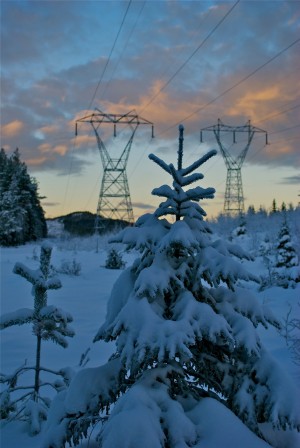Competing and conflicting concerns regarding conservation and the need to mitigate climate change look set to widen divisions between organizations and actors within Norway’s environmental movement.

A split between strict conservationists, who wish to avoid any encroachments on Norway’s renowned natural beauty, and those who feel renewable energy projects should take precedence over such concerns, is becoming a defining feature of the green movement in the country, reported newspaper Aftenposten this week. The issues involved – which have similarly divided other environmental movements across the world – look likely to widen even more, as government plans to increase grid capacity and electrical supply from non-fossil fuel sources will multiply rapidly over the coming years.
Recent cases that have attracted strong public interest, such as the proposed “monster mast” power lines over Hardanger fjord, have revealed these divisions publicly. In the Hardanger case, organizations including Naturvernforbundet, Norges Miljøvernforbund and the World Wide Fund for Nature (WWF) have joined vocal protests against the overhead power masts, whereas the Bellona Foundation, whose focus in recent years has turned to sustainable technologies, and ZERO see them as necessary to increase network capacity for future improved production of renewable energy.
Supporters of improved grid capacity and renewable energy projects hope the lines will allow Norway to export more clean energy in order to compensate for coal and gas production in Europe. At the same time, greater capacity will mean that the oil industry itself will be able to use less non-renewable sources, even when the sector itself is involved in the extraction of fossil fuels.
Marius Holm of Bellona told Aftenposten that “increased production of renewable energy demands increased grid capacity – therefore, we need the lines in Hardanger.”
Opponents have been joined by local communities and politicians, as well as the tourism industry, in opposing any such encroachments. They have launched campaigns to avoid unnecessary construction that blights areas felt to be important to Norway’s natural heritage, including rivers and waterways, as seen in Nature and Youth’s “save the rivers” initiative, which hopes to protect around 100 rivers from energy-related construction projects.
The often competing demands of conservation and renewable energy production have also caused headaches for the Socialist Left Party (Sosialistisk venstreparti, SV), which as well as priding itself on its ecological credentials also controls the environmental ministry as part of the red-green coalition government. According to Aftenposten, a government source has revealed a growing divide between the party itself and the ministry, with many party members supporting both a decrease in greenhouse gas emissions and the protection of the country’s wilderness and sensitive ecological areas.
The director of the Norway’s waterways and energy directorate (Norges Vassdrags- or energidirektorat, NVE), Agnes Aas, has outlined plans to increase renewable energy production, admitting that “we must further encroach on the Norwegian landscape in order to prevent increased global warming.” 1,700 kilometers of new power line applications are currently being considered by NVE, as well as ever-increasing wind turbine proposals and projects that interfere with the natural flow of several rivers and waterways.
With so many new projects expected over the coming years, the conflict between strict conservation and the rapid expansion of renewable energy capacity seems likely to further strain Norway’s green movement, unless its leaders can find a suitable accommodation or alternative path soon.
Views and News from Norway/Aled-Dilwyn Fisher
Join our Forum if you’d like to comment on this story.

